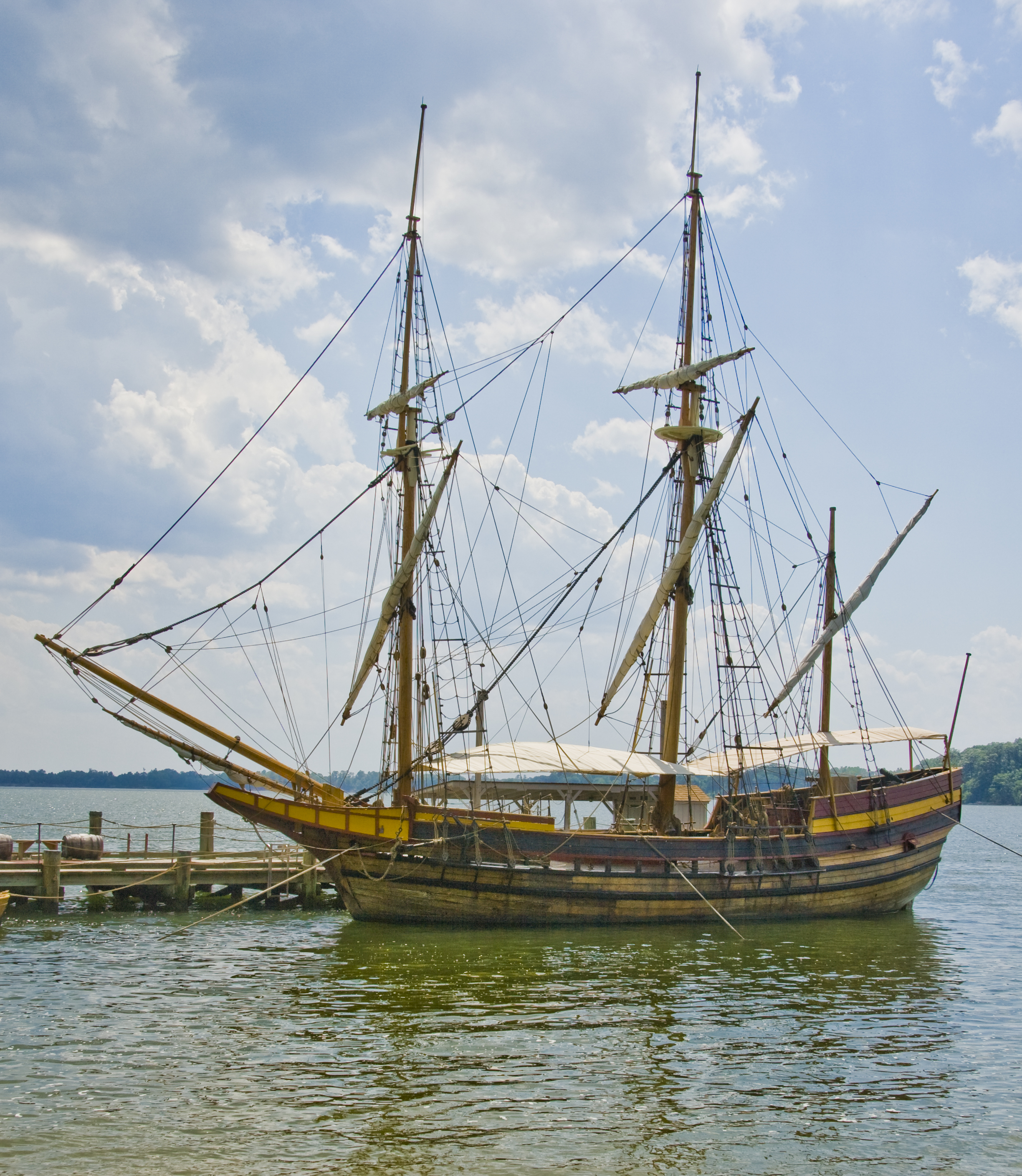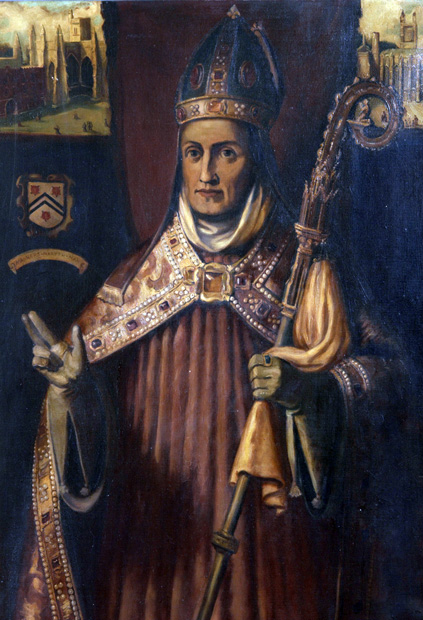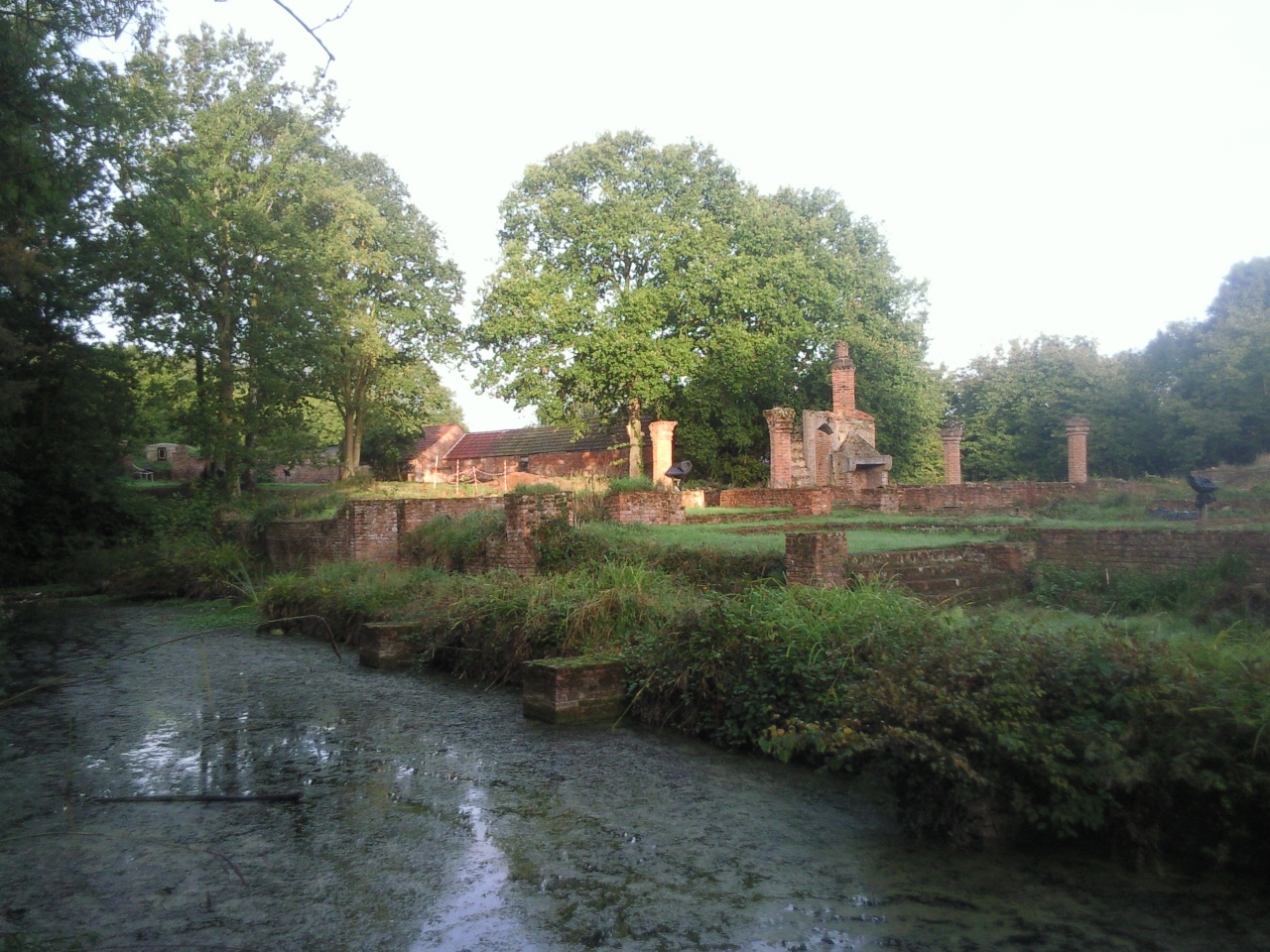|
Ralph Kettell
Ralph Kettell (1563–1643) was an English college head, the third President of Trinity College, Oxford. In a long tenure he built up the college both in terms of architecture and its academic reputation. Life He was the third son of John Kettell, gentleman, of King's Langley, Hertfordshire. He was nominated to a scholarship at Trinity in 1578 by Lady Elizabeth Paulet of Tittenhanger, the widow of Sir Thomas Pope, founder of the college. One of his contemporaries and friends at Trinity was Edward Hoby. Kettell was elected Fellow in 1583. He graduated B.A. 1682, M.A. 1586, B.D. 1594, and D.D. 1597, and, after filling various college offices, was elected president in 1599, on the death of Arthur Yeldard. Among those who as students were under his care while he was either tutor or president were the bishops Gilbert Sheldon, Henry Glenham, William Lucy, Gilbert Ironside, and Robert Skinner; also Sir John Denham, James Harrington, Edmund Ludlow, Henry Ireton, George Calvert, 1st ... [...More Info...] [...Related Items...] OR: [Wikipedia] [Google] [Baidu] |
Trinity College, Oxford
(That which you wish to be secret, tell to nobody) , named_for = The Holy Trinity , established = , sister_college = Churchill College, Cambridge , president = Dame Hilary Boulding , location = Broad Street, Oxford OX1 3BH , coordinates = , location_map = Oxford (central) , undergraduates = 308 (2011/2012) , graduates = 125 , shield = , blazon = '' Per pale or and azure, on a chevron between three griffins' heads erased four fleurs-de-lis all counter-changed'' (arms of Sir Thomas Pope, Founder) , homepage = , boat_club Boat Club Trinity College (full name: The College of the Holy and Undivided Trinity in the University of Oxford, of the foundation of Sir Thomas Pope (Knight)) is one of the constituent colleges of the University of Oxford in England. The college was founded in 1555 by Sir Thomas Pope, on land previously occupied by Durham College, home to Benedictine monks from Durham Cathedral. Despite its large physical size, the college is relatively sma ... [...More Info...] [...Related Items...] OR: [Wikipedia] [Google] [Baidu] |
Cecilius Calvert, 2nd Baron Baltimore
Cecil Calvert, 2nd Baron Baltimore (8 August 1605 – 30 November 1675), also often known as Cecilius Calvert, was an English nobleman, who was the first Proprietor of the Province of Maryland, ninth Proprietary Governor of the Colony of Newfoundland, and second of the colony of Province of Avalon to its southeast. His full title was "First Lord Proprietary, Earl Palatine of the Provinces of Maryland and Avalon in America". He received the proprietorship after the death of his father, The 1st Baron Baltimore (1579 – 15 April 1632), for whom it had been intended. Cecil, Lord Baltimore, established and managed the Province of Maryland from his home, Kiplin Hall, in North Yorkshire, England. As an English Roman Catholic, he continued the legacy of his father by promoting religious tolerance in the colony. Maryland became a haven for Catholics in the New World, particularly important at a time of religious persecution in England. Lord Baltimore governed Maryland for for ... [...More Info...] [...Related Items...] OR: [Wikipedia] [Google] [Baidu] |
Hothorpe Hall
Hothorpe Hall, in Northamptonshire, is a Georgian manor house near Market Harborough. It lies in the parish of Marston Trussell in Northamptonshire but is close to Theddingworth in Leicestershire. The hall is currently used as a conference centre and wedding venue. History The now- deserted village of Hothorpe was in medieval times a chapelry of Theddingworth, the village immediately to the north across the River Welland. In 1801 the present Hothorpe House was built by John Cook on the site of an earlier Tudor manor, and in about 1830 the owner removed what remained of the village, rehoused the inhabitants in Theddingworth and laid out the park which surrounds the house. The Cook family lived at Hothorpe until 1881 when John Cook's great-nephew, Henry Everett sold the estate to Sir Humphrey de Trafford, 2nd Baronet, who presented it to his second son Charles de Trafford. Charles de Trafford lived at Hothorpe for about 47 years, extending the house and, in 1892, building a Ro ... [...More Info...] [...Related Items...] OR: [Wikipedia] [Google] [Baidu] |
John Aubrey
John Aubrey (12 March 1626 – 7 June 1697) was an English antiquarian, antiquary, Natural philosophy, natural philosopher and writer. He is perhaps best known as the author of the ''Brief Lives'', his collection of short biographical pieces. He was a pioneer Archaeology, archaeologist, who recorded (often for the first time) numerous megalithic and other Ancient monument, field monuments in southern England, and who is particularly noted for his systematic examination of the Avebury henge monument. The Aubrey holes at Stonehenge are named after him, although there is considerable doubt as to whether the holes that he observed are those that currently bear the name. He was also a pioneer Folkloristics, folklorist, collecting together a miscellany of material on customs, traditions and beliefs under the title "Remaines of Gentilisme and Judaisme". He set out to compile English county histories, county histories of both Wiltshire and Surrey, although both projects remained unfini ... [...More Info...] [...Related Items...] OR: [Wikipedia] [Google] [Baidu] |
Bishop Of Winchester
The Bishop of Winchester is the diocesan bishop of the Diocese of Winchester in the Church of England. The bishop's seat ('' cathedra'') is at Winchester Cathedral in Hampshire. The Bishop of Winchester has always held '' ex officio'' (except during the period of the Commonwealth until the Restoration of the Monarchy) the office of Prelate of the Most Noble Order of the Garter since its foundation in 1348, and Bishops of Winchester often held the positions of Lord Treasurer and Lord Chancellor '' ex officio''. During the Middle Ages, it was one of the wealthiest English sees, and its bishops have included a number of politically prominent Englishmen, notably the 9th century Saint Swithun and medieval magnates including William of Wykeham and Henry of Blois. The Bishop of Winchester is appointed by the Crown, and is one of five Church of England bishops who sit ''ex officio'' among the 26 Lords Spiritual in the House of Lords, regardless of their length of service. The Dioc ... [...More Info...] [...Related Items...] OR: [Wikipedia] [Google] [Baidu] |
Thomas Bilson
Thomas Bilson (1547 – 18 June 1616) was an Anglican Bishop of Worcester and Bishop of Winchester. With Miles Smith, he oversaw the final edit and printing of the King James Bible. Life Years under the Tudors (1547–1603) Thomas Bilson's father, Harmann Bilson, is said to have been a descendant of the Duke of Bavaria through his own grandmother, the wife of Arnold Bilson, a citizen of "High Germany".W.H. Challen, 'Thomas Bilson, Bishop of Winchester, his family, and their Hampshire, Sussex, and other connections', ''Proceedings of the Hampshire Field Club and Archaeological Society'' XIX Part 1 (1955), (Part 1at pp. 35-46 and (Part 2at pp. 253-75(Society's pdfs). Harmann became a fellow of Merton College, Oxford in 1537 and graduated B.A. on 27 March 1538/39. Thomas was one of his six children (three sons and three daughters), and was born in the city of Winchester.'Thomas Bilson', in A. a Wood, ed. P. Bliss, ''Athenae Oxonienses'', Third Edition, with additions (F.C. and J. R ... [...More Info...] [...Related Items...] OR: [Wikipedia] [Google] [Baidu] |
Sir Francis Walsingham
Sir Francis Walsingham ( – 6 April 1590) was principal secretary to Queen Elizabeth I of England from 20 December 1573 until his death and is popularly remembered as her " spymaster". Born to a well-connected family of gentry, Walsingham attended Cambridge University and travelled in continental Europe before embarking on a career in law at the age of twenty. A committed Protestant, during the reign of the Catholic Queen Mary I of England he joined other expatriates in exile in Switzerland and northern Italy until Mary's death and the accession of her Protestant half-sister, Elizabeth. Walsingham rose from relative obscurity to become one of the small coterie who directed the Elizabethan state, overseeing foreign, domestic and religious policy. He served as English ambassador to France in the early 1570s and witnessed the St. Bartholomew's Day massacre. As principal secretary, he supported exploration, colonization, the use of England's maritime strength and ... [...More Info...] [...Related Items...] OR: [Wikipedia] [Google] [Baidu] |
Garsington
Garsington is a village and civil parish about southeast of Oxford in Oxfordshire. "A History of the County of Oxfordshire" provides a detailed history of the parish from 1082. The 2011 Census recorded the parish's population as 1,689. The village is known for the artistic colony and flamboyant social life of the Bloomsbury Group at Garsington Manor when it was the home from 1914 to 1928 of Philip and Ottoline Morrell, and for the Garsington Opera which was staged here from 1989 until 2010. Buildings Garsington Manor Garsington Manor in Southend was built in the 16th century and remodelled in the 17th century. It is a Grade II* listed building. It was the home of Lady Ottoline Morrell (1873–1938), doyenne of the Bloomsbury group of writers and artists who used to meet at the manor. These included the philosopher Bertrand Russell, the writers Aldous Huxley, W. B. Yeats, Virginia Woolf and D. H. Lawrence and the artists Mark Gertler, Eric Gill and Dora Carrington. Gars ... [...More Info...] [...Related Items...] OR: [Wikipedia] [Google] [Baidu] |
William Fiennes, 1st Viscount Saye And Sele
William Fiennes, 1st Viscount Saye and Sele (28 June 158214 April 1662) was an English nobleman and politician, known also for his involvement in several companies for setting up overseas colonies. Early life He was born at the family home of Broughton Castle near Banbury, in Oxfordshire, the only son of Richard Fiennes, 7th Baron Saye and Sele, and his wife Constance, daughter of Sir William Kingsmill. He was educated at New College, Oxford. He was a descendant and heir of the sister of William of Wykeham, the college's founder. Fiennes succeeded to his father's barony in 1613. 1620s During the latter part of James I's reign, Saye was one of the most prominent opponents of the court. In 1621 he was active against Francis Bacon, and urged that he should be degraded from the peerage. In 1622 he opposed the benevolence levied by the king, saying that he knew no law besides parliament to persuade men to give away their own goods; he spent six months in the Fleet Prison, and t ... [...More Info...] [...Related Items...] OR: [Wikipedia] [Google] [Baidu] |
William Laud
William Laud (; 7 October 1573 – 10 January 1645) was a bishop in the Church of England. Appointed Archbishop of Canterbury by Charles I in 1633, Laud was a key advocate of Charles I's religious reforms, he was arrested by Parliament in 1640 and executed towards the end of the First English Civil War in January 1645. A firm believer in episcopalianism, or rule by bishops, "Laudianism" refers to liturgical practices designed to enforce uniformity within the Church of England, as outlined by Charles. Often highly ritualistic, these were precursors to what are now known as high church views. In theology, Laud was accused of Arminianism, favouring doctrines of the historic church prior to the Reformation and defending the continuity of the English Church with the primitive and medieval church, and opposing Calvinism. On all three grounds, he was regarded by Puritan clerics and laymen as a formidable and dangerous opponent. His use of the Star Chamber to persecute opponents ... [...More Info...] [...Related Items...] OR: [Wikipedia] [Google] [Baidu] |
Broad Street, Oxford
Broad Street is a wide street in central Oxford, England, just north of the former city wall. The street is known for its bookshops, including the original Blackwell's bookshop at number 50, located here due to the University of Oxford. Among residents, the street is traditionally known as The Broad. Location In Broad Street are Balliol College, Trinity College, Exeter College (front entrance in the adjoining Turl Street). The Museum of the History of Science (in the original Ashmolean Museum building), the Clarendon Building, the Sheldonian Theatre and the Weston Library (renamed in 2015, part of the Bodleian Library, the main University library in Oxford) are important historical Oxford University buildings at the eastern end of the street. These buildings form the ''de facto'' centre of the University, since most academic buildings in the centre of Oxford are owned by individual (and autonomous) colleges rather than the University itself. To the west the street be ... [...More Info...] [...Related Items...] OR: [Wikipedia] [Google] [Baidu] |





